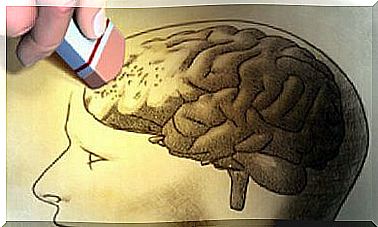The Excitation Transfer Paradigm

Have you ever heard of excitation transfer? We are in a football match, 44 minutes into the second half. It’s a minute to go. Corinthians is winning from one to zero against Palmeiras. A player from the hawks team tries to block a player from Palmeira inside the area and he falls.
The referee whistles the penalty and the Corinthians players begin to argue with the referee. Some seem to be very angry. A pig player pushes another Corinthians player and he fights back. The referee is forced to raise two red cards and several yellow ones. What’s happening? All of them are being victims of the excitation transfer paradigm.
It is very common to be faced with situations in which someone reacts somewhat or quite disproportionately to a stimulus that, at first, would not have a great intrinsic meaning. Many times we have received very unpleasant responses from a family member or someone we know without having done anything to deserve them.
In many of these moments, however, the comment or behavior is not intended or intended to harm the other. Furthermore, we can observe that this type of event is more likely to happen at the end of the day. What’s happening? Why is it happening? Keep reading and find out.
What’s happening?
Dolf Zillmann developed the excitation transfer paradigm from the arousal theory , which was created by Stanley Schachter. According to him, the arousal is equivalent to a physiological activation. Despite being a much more complex and extensive theory than that, this brief description is enough to understand the Zillmann paradigm that we want to explain.
According to Zillmann, physiological activation does not end suddenly when the conditions that gave rise to it are no longer present. In fact, it takes a lot longer to disappear due to the fact that the hormonal processes behind them are slow.
That is, if a person was activated in a certain context, and then finds himself in another context and this also causes an emotion, this second activation is added to the one that had been generated in the first context. This situation is what is known as residual arousal , that is, the degree of activation that we take from one context to another.

erroneous attribution
When we take the arousal from context A to context B, we tend to attribute it erroneously and only to context B.
If our workday is being very heavy, and at the last minute our superior gives us one more task even though we don’t have time to finish it, our reaction could be very angry and we could explode in front of him – even if we don’t this most of the time. We will be attributing all our frustration to the last task our boss just gave us.
If the boss’s task had been passed on to us first thing in the morning, we would certainly have done it without any problem, as we would not have accumulated any kind of physiological response yet. Or maybe we even had, depending on how the day had gone by the time we got to work.
In this way, the excitation transfer paradigm may or may not be fulfilled, depending on how we were that day or that period of time.
So before responding to someone in anger or fury, it’s best to let a few minutes pass and try to relax as much as possible. That’s because on many occasions, popularly speaking, we can be “warm up” and anything can be the final spark to generate fire. “It doesn’t even come that I’m terrible today”; when someone tells us that, it’s better not to go.
Zillmann experiment on the excitation transfer paradigm
In 1971, Zillmann conducted an experiment on the effect of watching movies with different emotional content on aggressive behavior. The experiment was carried out in three different steps:
- At the beginning of the session, an accomplice in the research aroused anger in the participant.
- Soon after, a film with violent, erotic or neutral content was projected to the participant.
- The last step consisted of giving the patient the opportunity to administer electrical discharges of varying intensity to the accomplice.
Zillmann expected that those who had seen erotic and aggressive films would give the “enemy” greater electrical discharges than those who had seen the neutral films. The result showed that the participants who saw the movie with the violent content actually managed more intense downloads than after watching the movie with the neutral content. And those who saw the erotic film administered more intense discharges compared to the aggressive film.
Starting from Zillmann’s theory, in 1993 Scott C. Bunce’s research team conducted an experiment on excitation transfer. Among the main results was the fact that extroverts reacted worse to unpleasant stimuli.
The reason, according to the authors, lies in the fact that those who have higher scores in this personality trait seem to enjoy fewer negative experiences in their environment, which is why they should put more effort into processing information from unpleasant experiences.

Final conclusions
Research that has been carried out to date on the excitation transfer paradigm shows that activation changes are not correctly attributed to the actual events that trigger them. The subjects seem to understand that their activation is being caused by the situation that is taking place at that present moment, and not by a sum of previous situations that gradually increased the activation.
The results also suggest that reactions and actions do not rely on direct relationships between perceived arousal and its causal antecedent. This effect highlights the relevance of physiological arousal in the modulation of affective intensity, and confirms the idea that it is undifferentiated, that is, non-specific.









